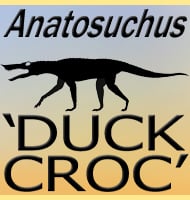Vitakridrinda
In Depth Described from very partial remains, Vitakridrinda is a difficult dinosaur to talk about other than it seems to have been an abelisaurid. Abelisaurs were the dominant type of theropods in the southern continents during the late Cretaceous while the tyrannosaurs dominated the North. Because of the abundance of late Cretaceous rocks in Asia, … Read more
